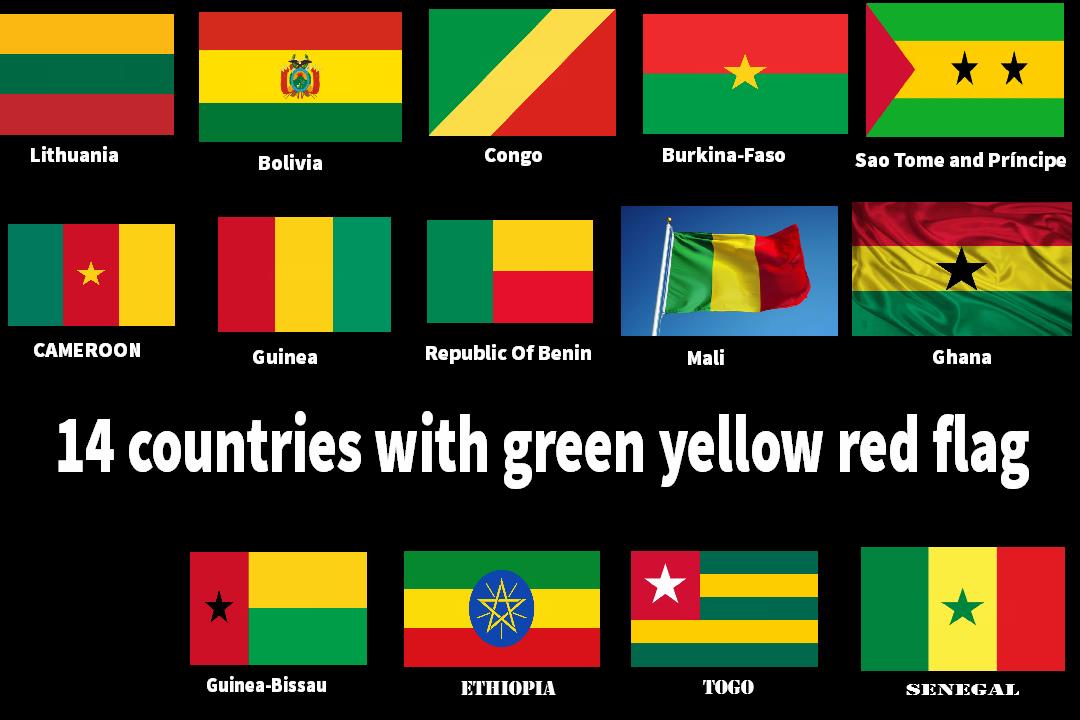Exploring The Significance Of Green And Red Country Flags
Flags are powerful symbols that represent the identity, culture, and values of a nation. Among the myriad of flags around the world, those featuring green and red hues hold a special significance. This article delves into the meanings and historical contexts of various national flags adorned with these vibrant colors. By understanding the symbolism behind these flags, we can appreciate the rich tapestry of global cultures they represent.
In this exploration, we will discuss the reasons why certain countries have chosen green and red as their flag colors, the historical events that have influenced these choices, and the cultural meanings attached to them. Additionally, we will examine specific flags, highlighting their unique designs and the stories they tell. Whether you’re a flag enthusiast or simply curious about the world’s diverse cultures, this article aims to provide comprehensive insights into the significance of green and red country flags.
Join us as we embark on this journey through colors, symbolism, and heritage, and uncover how these flags not only represent nations but also embody the aspirations and struggles of their people.
Table of Contents
- 1. Introduction
- 2. The Meanings of Green Flags
- 3. The Meanings of Red Flags
- 4. Countries Featuring Green and Red Flags
- 5. The Design and Evolution of These Flags
- 6. Cultural Significance of Green and Red Flags
- 7. Conclusion
- 8. Sources
1. Introduction
Flags have been used for centuries as a means of identification, conveying messages about the nation they represent. The colors of a flag are often steeped in historical significance and cultural meaning. In this section, we will explore the underlying meanings associated with the colors green and red in national flags.
2. The Meanings of Green Flags
Green is a color that often symbolizes nature, growth, and fertility. In many cultures, it is associated with prosperity and abundance. Here are some common interpretations of green in flags:
- Nature and Agriculture: Green is frequently used to represent a country’s agricultural wealth and natural resources.
- Islamic Heritage: In many Islamic countries, green is a sacred color symbolizing paradise and faith.
- Hope and Renewal: Green is often seen as a color of hope and new beginnings, reflecting the aspirations of a nation.
3. The Meanings of Red Flags
Red is a powerful color often associated with courage, sacrifice, and revolution. The significance of red in flags can be summarized as follows:
- Courage and Valor: Red often symbolizes the bravery of those who fought for a country's independence.
- Bloodshed: In many contexts, red represents the blood shed in the struggle for freedom and justice.
- Revolution and Change: Red has been a prominent color in various revolutionary movements, representing the fight against oppression.
4. Countries Featuring Green and Red Flags
Numerous countries incorporate both green and red in their flags. Here are a few notable examples:
4.1. Bangladesh
Bangladesh's flag features a green field with a red circle, symbolizing the blood of those who died in the struggle for independence and the lush landscape of the country.
4.2. Morocco
The Moroccan flag is predominantly red with a green pentagram in the center, symbolizing the connection between the monarchy and Islam.
4.3. Portugal
Portugal’s flag is divided into green and red sections, with the green symbolizing hope and the red representing the blood shed by those who fought for the nation.
5. The Design and Evolution of These Flags
The design of flags often evolves over time, reflecting changes in a country’s history and identity. This section will explore how some green and red flags have been designed and modified over the years.
- Historical Context: Many flags have undergone changes to better represent the values and traditions of their people.
- Symbolism in Design: The arrangement of colors and symbols is often intentional, conveying specific messages about the nation’s identity.
- Public Sentiment: Changes to flag designs can result from public sentiment or political movements, showcasing the dynamic nature of national identity.
6. Cultural Significance of Green and Red Flags
The cultural meanings of green and red flags extend beyond their visual appearance. Here’s how these flags resonate within the societies they represent:
- National Pride: Flags are often a source of national pride, uniting citizens under a common identity.
- Celebration and Ritual: Flags play a crucial role in national celebrations and rituals, symbolizing unity and heritage.
- Global Recognition: The unique designs of green and red flags contribute to their recognition on the world stage, fostering international relationships.
7. Conclusion
In conclusion, the exploration of green and red country flags reveals a rich tapestry of meanings, histories, and cultural significance. These colors not only represent the identity of nations but also embody the struggles and aspirations of their people. As we continue to appreciate the diversity of flags around the world, we are reminded of the shared values that unite us as global citizens.
We invite you to share your thoughts on this topic. What do you find most intriguing about the flags of different countries? Leave your comments below, and don’t forget to share this article with others who may be interested!
8. Sources
For further reading and verification of the information presented in this article, please refer to the following sources:
- Smith, John. "The Significance of Colors in Flags." Journal of Heraldry, 2022.
- National Geographic. "Flags of the World: Meanings and Symbols." 2023.
- World Flag Database. "Green and Red Flags from Around the World." 2023.
TV Journalist Sexually Assaulted While Live On Air In Madrid: A Shocking Incident And Its Implications
Top 10 Black People Funny Movies That Will Make You Laugh Out Loud
The Three Best Friends: A Journey Of Unbreakable Bonds

.jpg)
